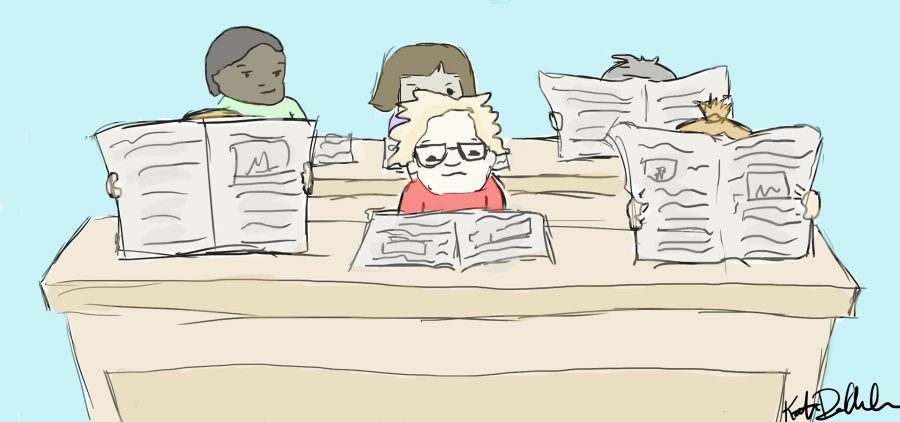In a world of growing technology and frequent communication there is one thing many students seem to be lacking — an understanding of current events. While the headlines of “Syrian Refugee Crisis,” “2016 Presidential Election” and “ISIS’s influence on the Middle East” are all flashed around on news sources and overheard in passing conversations, very few students actually have a thorough understanding of what is happening in the world around them.
Students have easy access to numerous news sources, yet what they lack is the time and motivation to learn and comprehend crucial current events. Including time to discuss current events as part of learning curriculum for history classes at Palo Alto High School would be the most effective way to educate all students about the events around them that have direct implications on their lives.
The beneficial outcomes of implementing current events into classroom curriculum are numerous. It would teach students to care about the community around them as well as to look for the effects of community, state and nationwide political decisions. It would also help encourage students to become engaged citizens and in addition to teaching them why certain decisions are made and what happens as a result.
Teaching current events in the classrooms would also allow students to have more intellectual discussions and opportunities to form their own opinions about current event issues and what should be done about them. If students are taught about current events within the classroom, they will have the confidence to engage in intellectually stimulating conversations outside the classroom, whether it be with friends, parents or strangers.
History tecacher Adam Yonkers believes that it is a citizen’s civic duty to stay up to date with current events.
“One of the things I really like to do is connect the past to the present,” Yonkers said. “In teaching concepts in all my classes I’m always looking for how students can apply [the material] to current events and why it’s relevant to them.”
Additionally, as some students become eligible to vote, it is important that Paly plays its part in making sure that all of its students are informed voters.
“I think it would be super important to learn about [voting propositions],” said senior Ibby Day. “Upperclassmen at least should pay attention because there will come a time in their life where they can vote and should be educated. I think just learning about these things gives you a way to develop how you feel about issues regardless of what it is, liberal, conservative or moderate. You can just prepare to address these issues in the future.”
History teachers could have the opportunity to discuss many of the issues addressed on the ballot so that students know what they are voting for. This allows students to be a part of positive change.
Part of a school’s purpose is to inform students and mold them into engaged citizens who help or change their community in a positive manner once they have graduated. Teaching students current events throughout their high school years would get them into the practice of staying up to date with the world around them. Therefore, they are more likely to continue to stay informed about current events once they graduate.
“My hope is that it actually builds upon an awareness and that they’re able to then look at the news more critically,” Yonkers said. “I try to make the argument to students that they should know about whatever historical events are happening and what’s going on now.”
The implementation of teaching current events in the classrooms would be simple. Since every Paly student is required to take a history course each year, current events would be best discussed within history classes. Each teacher could take five to 10 minutes at the start or end of each class period to discuss and break down the most important events happening at that time.
Teachers could also choose a variety of ways in which to teach their students about current events. They could switch their lessons up by holding a question and answer session with their students following one specific event for a week or month at a time. This would allow a more in-depth look at the issue.
Another simple way this could be implemented is to assign each student one week within the school year where they must research and present a current even to the class.
Teaching current events in the classrooms would also allow students to have more intellectual discussions and opportunities to form their own opinion.
The possibilities for how current events could be taught are countless, and so are the benefits of doing so. Being an engaged citizen within one’s community is one of the most admirable and important characteristics one can possess. Paly should play its part in creating students who are as engaged and educated as possible by making current events a required part of the history curriculum.

